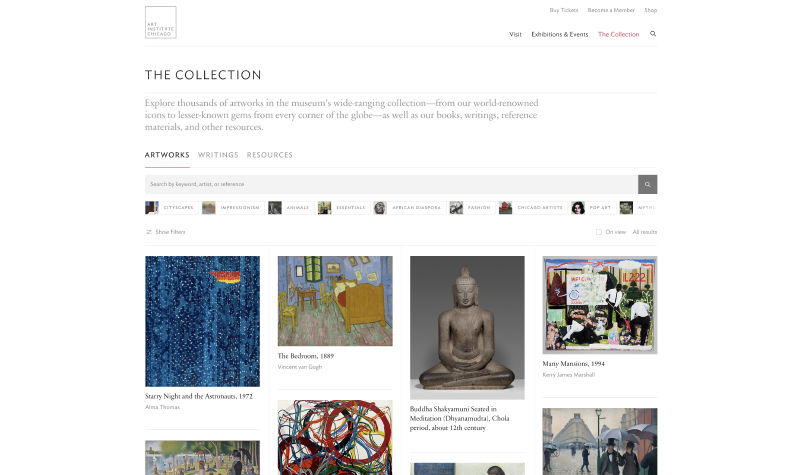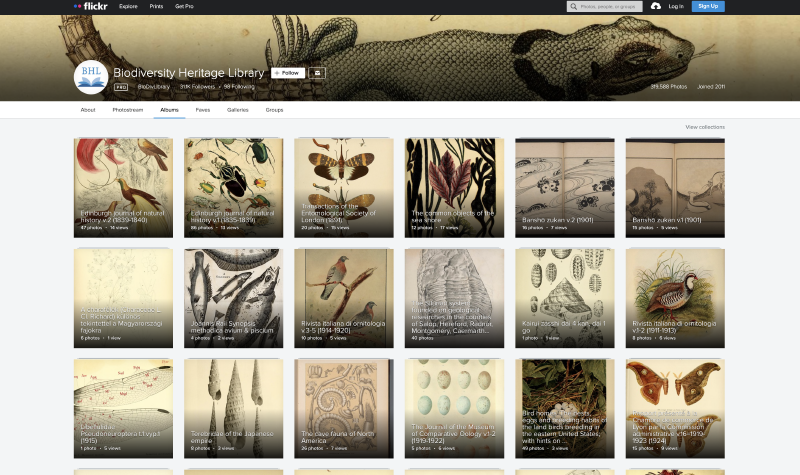Try Skillshare today with one-month free membership--click here now!
FINDING & USING PUBLIC DOMAIN & CREATIVE COMMONS IMAGES
This guide will help you find and correctly attribute public domain and Creative Commons images for your designs.
Disclaimer: While the sites listed all aim to provide access to Creative Commons and public domain resources, please note that we cannot guarantee that all of the resources found on these sites will not violate copyright. If you are outside the U.S., you will also need to review the copyright laws of the country where you plan to use the materials.
Public Domain
When adding images you did not create into your design projects, it's imperative that you make sure you're not violating anyone's copyright. One way to do this is to find public domain images.
Copyright.gov explains the public domain as follows: "A work of authorship is in the “public domain” if it is no longer under copyright protection or if it failed to meet the requirements for copyright protection. Works in the public domain may be used freely without the permission of the former copyright owner."
In essence, the public owns these works. And once works have entered the public domain, it is there forever. And because these works can be used without permission or fee, they are ideal for many projects.
Cornell University has an excellent reference tool for calculating the term of copyright when determining a public domain status, which can be quite tricky for older works.
Note: Even if a work that you use is in the public domain, it is advisable to provide attribution for the work or, at a minimum, keep a record of the attribution of the work, so that you or other interested parties can find it later if necessary.
CREATIVE COMMONS (CC)
Creative Commons (CC) is a nonprofit organization.
When using Creative Commons-licensed content, you will need to attribute the creator of the CC work you are using, as well as meet the terms of the license under which the image is offered.
To learn more about Creative Commons licenses click here.
CreativeCommons.org describes what they do as follows: “Provide Creative Commons licenses and public domain tools that give every person and organization in the world a free, simple, and standardized way to grant copyright permissions for creative and academic works; ensure proper attribution; and allow others to copy, distribute, and make use of those works.”
The wealth of material available under Creative Commons licenses includes everything from the articles in the Public Library of Science, to millions of photographs on Flickr, to all the text on Wikipedia, and over 51 million media files in Wikimedia Commons.
Note: Even if content is covered by a Creative Commons license, you must always make sure that your use does not violate that license and that you properly attribute the content.
CREATIVE COMMONS Zero (CC0)
Creative Commons Zero (CC0) is a public domain dedication tool, that when applied to a work or creative content, permanently relinquishes all copyright and related rights that an owner may have in a work. CC0 works may be used free-of-charge for both commercial and non-commercial purposes without prior consent or permission, including copying, modification, distribution or performance.
The language from the license reads: The public can reliably and without fear of later claims of infringement build upon, modify, incorporate in other works, reuse and redistribute as freely as possible in any form whatsoever and for any purpose, including without limitation commercial purposes.
"Related rights" include moral rights, rights of publicity and privacy, rights protecting against unfair competition, and especially, with respect to museums, contract rights. Every time you buy a ticket to a museum or browse their website, you agree to their terms and conditions. With CC0, they've given those conditions up and adopted an open access business model.
Works that have been designated CC0 by their owners, combined with the release of the high resolution images, can now be used to make new art, or quilts, or books covers, or calendars, or note cards, or anything you can think of. And you can sell what you make without limitation.
OPEN ACCESS MUSEUMS
A list of museums and galleries in the United States that have embraced CC0 and open access. Explore images of works in their collections.
ART INSTITUTE OF CHICAGO
Explore the museum's wide-ranging collection of artworks. Use any images with the label “CC0 Public Domain Designation” for any purpose, including commercial and noncommercial uses, free of charge and without additional permission from the museum.
The museum requests that you include the following caption with reproductions of the images: Artist. Title, Date. The Art Institute of Chicago. This information is available on the object page for each work.

Offers free, unrestricted use of over 50,000 images.
How to access the public domain images:
- Click on show filters
- Scroll down
- Select Public Domain
Once you click on an open access image, the CC0 public domain designation appears beneath the image on the left side of your screen. A download button appears on the right side of the screen. Images that are not open access will not have the CC0 designation or a download button.
BIODIVERSITY HERITAGE LIBRARY
The images in the Biodiversity Heritage Library Flickr are made freely available. Determine the copyright status of each image you wish to use. If the files are from a work in the public domain you are free to reuse it including commercial reuse. The Creative Common license does not allow commercial use without prior approval.
BHL appreciates any attribution. To attribute use, please use the following format: "Image from the Biodiversity Heritage Library. Contributed by [Holding Institution]. | www.biodiversitylibrary.org"

Over 200,000 Illustrations on Flickr
How to search the Biodiversity Heritage Library:
- Select Photostream
- Click on the magnifying glass
- Enter search term in the search box and press "Enter"